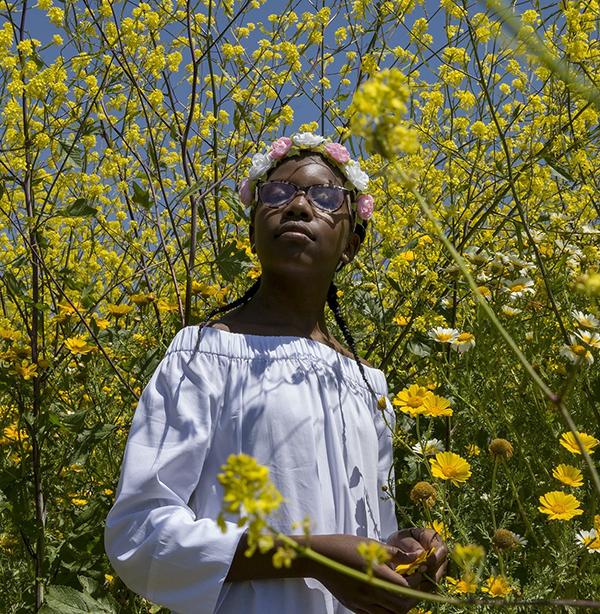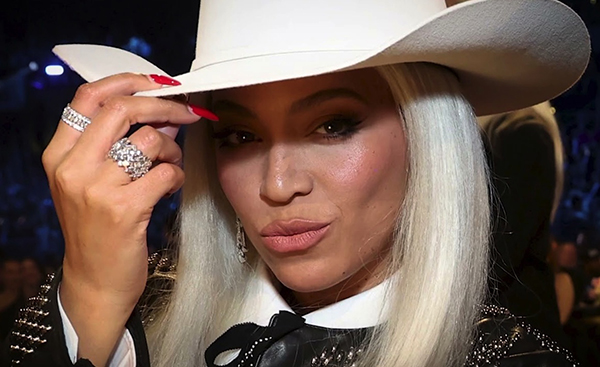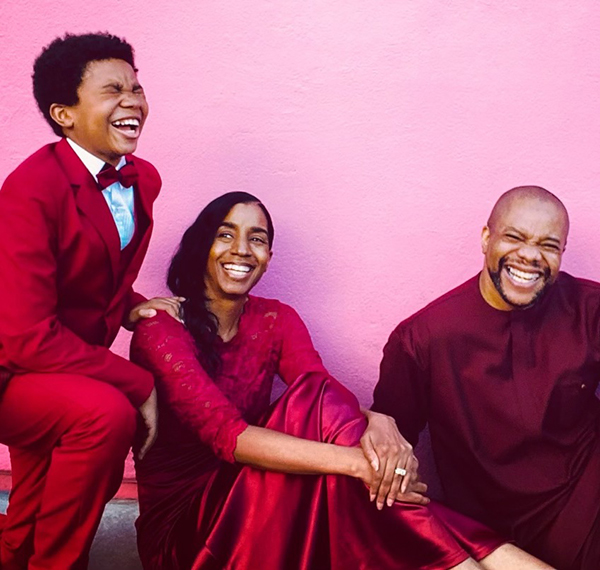By Faith Petrie
Contributing Writer
The 1992 Los Angeles riots made national news during a time of civil unrest. South Los Angeles residents took to the streets after a trial jury acquitted four officers for their involvement in the arrest and subsequent beating of Rodney King.
Sophia Nahli Allison recalls not learning about Latasha Harlins, a 15-year-old Black girl who was killed by a 51-year-old Korean store owner just two weeks after King was beaten, until her late 20s.
Harlins’ death is often cited as one of the catalysts of the 1992 riots. Her killer, Soon Ja Du, was tried and convicted of voluntary manslaughter, but was sentenced to only five years of probation, 400 hours of community service and restitution to the Harlins family for funeral expenses.
Though Harlins was remembered by rappers like Tupac Shakur and Ice Cube amd her death also mentioned in the National Geographic documentary “LA 92,” Allison wanted to reimagine Harlins’ life through a lens that celebrated her life instead of solely highlighting her death.
The result, “A Love Song for Latasha” was originally screened in April 2019 during the Tribeca Film Festival. Last week it was released on Netflix.
As the documentary’s director, Allison spent two years compiling interviews with Harlins’ family and friends. Best friend Tybie, referred to as Ty O’Bard, and cousin Shinese Harlins, play focal storytelling roles in the project.
Allison sat down with Wave contributing writer Faith Petrie via Google Hangout to discuss what it meant to be able to tell Harlins’ story and how growing up in South Los Angeles shaped her filmmaking process.
FP: I am curious as to how Latasha’s story found its way to you, which later manifested into the project that you’ve created today?
SA: You know what, I was actually just talking with Ty about this and feeling like there was … like a spiritual connection with Latasha and really feeling like she decided this is what would happen. I went through this journey of just trying to find as much information in the archives that I could about her and just came up with the same rhetoric over and over.
FP: If you happen to learn about the story of Latasha and everything that transpired, it’s usually in the context of her role of what we now know of as the Rodney King riots or even her remembrance in songs that Tupac created that are dedicated to her life. Rather than focusing on her death, you celebrated her life more so, and who she was as a person. What inspired you to make that choice instead?
SA: I really think it’s important for us to reimagine how the archive, … the written and oral history, has been preserved regarding Black women and Black girls. And historically, so many of our stories have been erased or we do only exist within the realm of our trauma. And I am really interested in ways that we can heal with history and have a holistic collective grieving and healing process with the community, but also understanding that we exist way beyond those final moments.
Latasha had a full life and just because the archives don’t reflect that, doesn’t mean that was not a reality. And so for me, my love of oral history and storytelling really expanded upon this idea of what happens when there’s no tangible evidence that existed, but it only exists through memories or through dreams or through people’s personal recollections.
FP: How did your understanding of the community and the people that live in [South L.A.] shape the content and the cinematography of your documentary?
SA: I grew up in Leimert Park and Jefferson Park, and while I was in Leimert Park, that was [and] still is, just the epicenter for Black art, creativity, you know, music. My mom was a storyteller in the community and within Leimert Park. So I grew up really understanding just the balance that was South Central, understanding the social economic issues, understanding racial tension, understanding the sociopolitical dynamics, but also seeing my mom as a storyteller or my dad, [who] taught me music lessons and was a musician.
So my brother and I were always able to live in between these two worlds. And I think that’s what really has shaped my experience of South Central, understanding that it’s so much more beyond the stereotypes that we see, but there is such a vibrant energy in the community and really wanting that to resonate throughout Latasha, wanting it to feel like this secret world that Black women and Black girls built for themselves during that time. So for me, I always grew up just understanding the two worlds I lived in.
FP: There is a hyper focus on Black women and Black femininity — at least that’s what I inferred when I was watching your documentary. If you could go deeper into why you chose the images that you did when making the project?
SA: So after interviewing Ty and Shinese, I constructed their interviews into a script that I felt really allowed us to take this journey of knowing who Latasha was. So this reimagining of the archive before we’re actually introduced to what happened to Latasha on that day, and then to being introduced to the two women, Tybie and Shinese, as adults and seeing how they’ve continued to persevere and move through life while still holding on to the memory of Latasha, but also living their fullness as grown women now. And so for me, when I wrote the script, I would just let the words fit with me and just really meditate on these memories that they shared and wanting it to be as if there was conjuring throughout this entire project, and really like, evoking the spirit of South Central and Latasha.
My creative producer [Janice Duncan] and I would just sometimes spend days walking around Latasha’s old neighborhood not even filming anything, but we just wanted to have an understanding of what the community is like now, how it was back then. And so, just really letting the images come organically. There were times where, you know, it can sometimes take a couple of months for a scene to reveal itself to us, or it may happen in a day, but just letting the process be as slow and methodical as needed and very intentional.
FP: Who should care about this story and why, and what do you want your audience to take away from this documentary?
SA: I think everyone should care about it because it is a life. It is a young girl who deserved to have so much more, deserved to have all of her dreams manifested, deserved to have everything she could have imagined and more for her loved ones and her friends. For me, what I really want this to do is engage with conversations about the adultification of Black girls and why we need to make sure we are supporting, protecting, listening to Black women, to Black girls because of how we have consistently been erased throughout history.
How we have been demonized, how we have been used as tropes of comedy. I want to stay away from the term of humanizing. I really hate using the word humanizing when it comes to Black folks, because it should just be a given, but I want this to allow us to continue to expand upon our dreams and our visions and our desires as Black women and as Black girls and being supported and held through that. I am a true believer that Black feminist theory is the way to healing this world and hoping that this, you know, introduces people to literature and artwork and scholarship by Black woman who have been setting the foundation or the intersectional healing for quite some time.
Faith Petrie is a freelance reporter for Wave Newspapers who covers South Los Angeles. She can be reached at petrie.faith@gmail.com.











